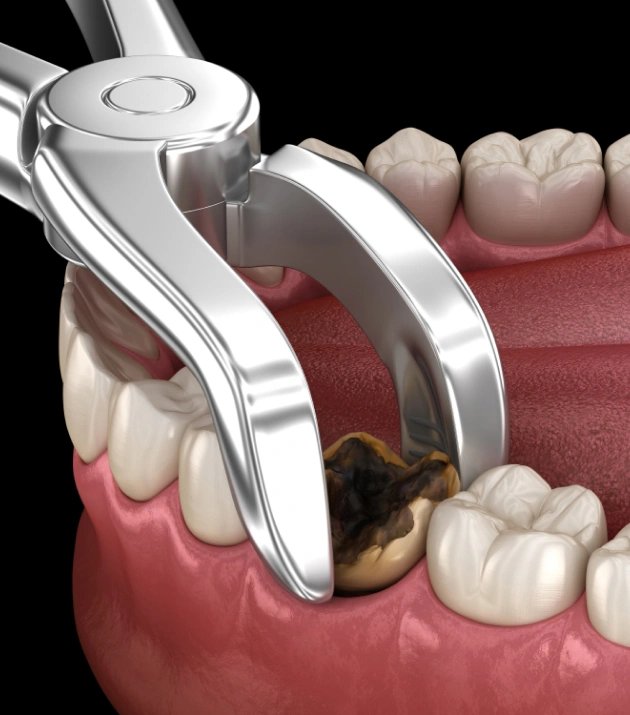
Two Methods of Tooth Extraction: Simple vs. Surgical
Dentists prioritize saving your natural teeth whenever possible, but there are times when extraction is necessary. The method of removal depends on the extent of the damage to the tooth:
Simple Extraction: This method is used for visible teeth. Local anesthesia is applied to numb the area, allowing for a more comfortable procedure. An elevator and forceps are then used to carefully remove the tooth.
Surgical Extraction: This procedure is performed under general anesthesia and is necessary for teeth that are not easily accessible, such as impacted or broken teeth beneath the gum line. The dentist makes a small incision in the gum, may remove surrounding bone, or cut the tooth before using an elevator and forceps to extract it.
While tooth extractions are commonly associated with the removal of wisdom teeth, they may also be required for several other reasons, including severe tooth decay, advanced gum disease, overcrowding, impacted teeth, broken teeth, and retained baby teeth that haven't fallen out naturally.
Why You Might Need a Tooth Extraction
Tooth decay
- Tooth decay initially affects the enamel, the outer layer of the tooth.
- Once the enamel is compromised, the inner part of the tooth begins to deteriorate.
- As the decay progresses, it can create a cavity that further weakens the tooth.
- When bacteria reach the center of the tooth, it can result in a root canal infection.
